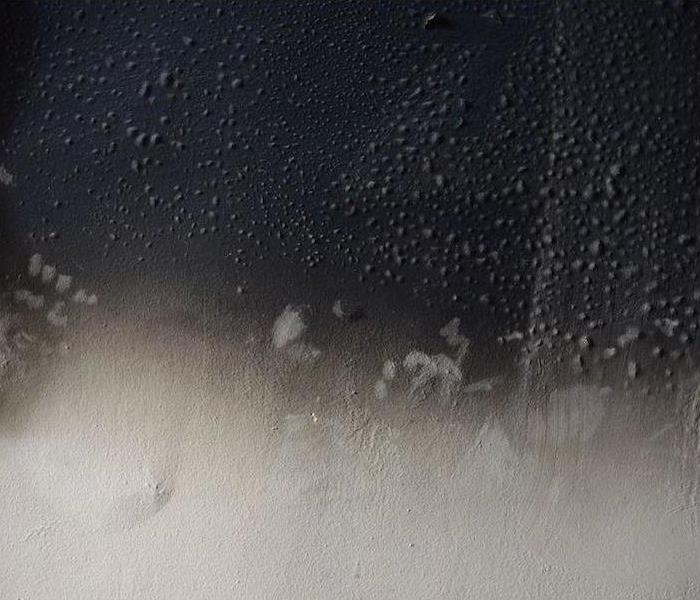Will Fire Damage Restoration Eliminate Smoke Residue Odors from My Manhattan Apartment?
1/25/2022 (Permalink)
We Vow to Eradicate Malodors No Matter How Persistent, Why SERVPRO Has Many Strategies to Deodorize Residences During Fire Damage Restoration in Manhattan
Smells, pleasant and unpleasant, are a part of life, but some events increase the possibility of a stench pervading your Manhattan home. Even a thorough clean-up of debris and residues after a household fire can leave malodors lingering. Especially tenacious are the rancid smells resulting from a kitchen fire. Are there solutions to this distressing problem, or will your home smell like a fire scene forever?
What Is the Definition of an Odor?
Working toward an answer for any problem requires understanding the challenge, and the odors that resist fire damage restoration in Manhattan are no exception. Odors are volatile molecules, which means they eventually “evaporate” and disappear. The speed at which this diminishing and vanishing occur varies, and if the source of the odor remains, additional molecules holding the scent continue to circulate in your home.
What Are Barriers to Removing Fire Damage-Based Odors?
The process of eliminating fire damage-related odors can be difficult. The hurdles to a swift and sure solution include:
- Uncertainty about the location of the odor source
- Uncertainty about which of many odor control methods finally eliminated one or more of the smells
- Migration of tiny odor-bearing particles into cracks, crevices, and home contents
- Differences in the perception of an odor -- why SERVPRO technicians listen to customers who still perceive an odor others feel has disappeared. We continue to work on elimination because research establishes that every person perceives the volatile molecules differently.
- Phantosmia is an extreme “difference” in perception, defined as an olfactory hallucination -- smoky smells being among the most common.
Enough Theory -- How Do Fire Damage Restoration and Deodorization Technicians Remove or Control an Odor?
Proprietary Products
Masking and Odor Absorbing Agents
- Odor Counteracting Beads -- The porous “beads” are permeated with a solvent-based counteractant that distracts from the unpleasant smell. The goal is to allow the alternative smell to remain long enough to permit the volatile molecules to dissipate. These beads are often deposited into a container to avoid softening or dissolving of paints or plastic surfaces. We might place them in an HVAC air intake area to disperse throughout your living quarters.
- Deodorant Granules or Pellets -- Deodorizing granules or pellets absorb odors using a mineral substance called Fullers Earth.
- Water-Based Odor Counteractants -- This product is available as a concentrate to mix into water or cleaning solutions. It neutralizes a wide range of odors, replacing the bad smell with a pleasant aroma during a wipe down or while cleaning.
- Water-Based Wet Mist Deodorizers -- This fluid is premixed and applied with a ULV mister. The superfine mist or fog permits the deodorizer to penetrate cracks and crevices and porous structures where smoke odor-bearing soot particles have sifted down and settled. Exhaust fans can be used after a few hours to facilitate the removal of airborne odors. Injection devices can use these deodorizers to treat hard to reach materials like carpet padding.
- Water or Solvent-Based Thermal Fog Deodorizers -- This blend of aromatic phenolics, odor counteractants, and fragrances in a solvent base is combusted in a heat chamber and dispensed throughout an odiferous space as a fog. The tiny fog particles recreate the conditions of the fire and pair with and neutralize odor-bearing soot particles.
Sealants -- Alcohol-based shellac or acrylic coatings encapsulate odor residues absorbed into porous building materials that continue to vaporize and cause issues. We use it as a last resort when other methods prove ineffective.
What Types of Equipment Help with Fire Odor Control and Elimination?
Ventilation equipment and pressure sprayers, thermal and Ultra Low Volume (ULV) misters or foggers, and personal protective equipment (PPE) is used by our technicians when using the preceding proprietary products. We use additional innovative machines and equipment if deep cleaning is inadequate for odor elimination:
- Vaportek units seal natural oils within a membrane. The oils volatilize as air currents pass through the membrane. Vaportek molecules neutralize odor molecules upon contact.
- Air scrubbers use negative pressure (suction) to seal edges of partitioned spaces and force contaminants, including odor-bearing particles, through HEPA filters before venting outdoors.
- Ozone generators eliminate odors as the machine generates ozone, an unstable gas composed of oxygen molecules containing three oxygen atoms. A chemical reaction oxidizes residues to remove smells.
- Photocatalytic oxidizers (hydroxyl generators) use ultraviolet (UV) rays to produce hydroxyl radicals. Hydroxyl radicals immediately oxidize and break down malodors into carbon dioxide and water.
Elimination of odors must be part of fire damage restoration for you to be confident enough to say the result is, “Like it never even happened.” The tools, techniques, and training we possess are why SERVPRO of Upper West Side delivers a malodor-free result. Call (917) 498-1362 to discuss your options for smoke odor eradication.






 24/7 Emergency Service
24/7 Emergency Service
